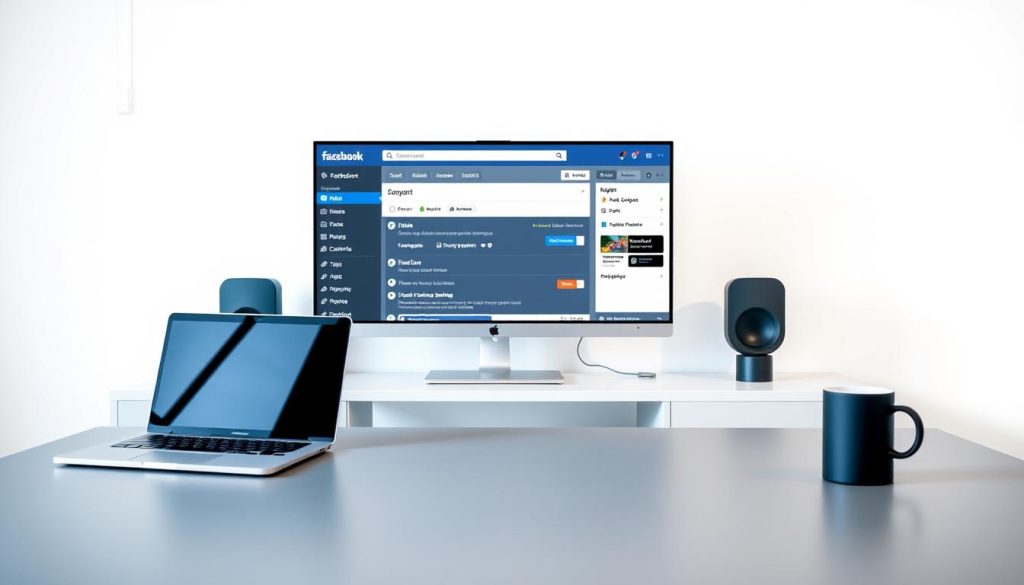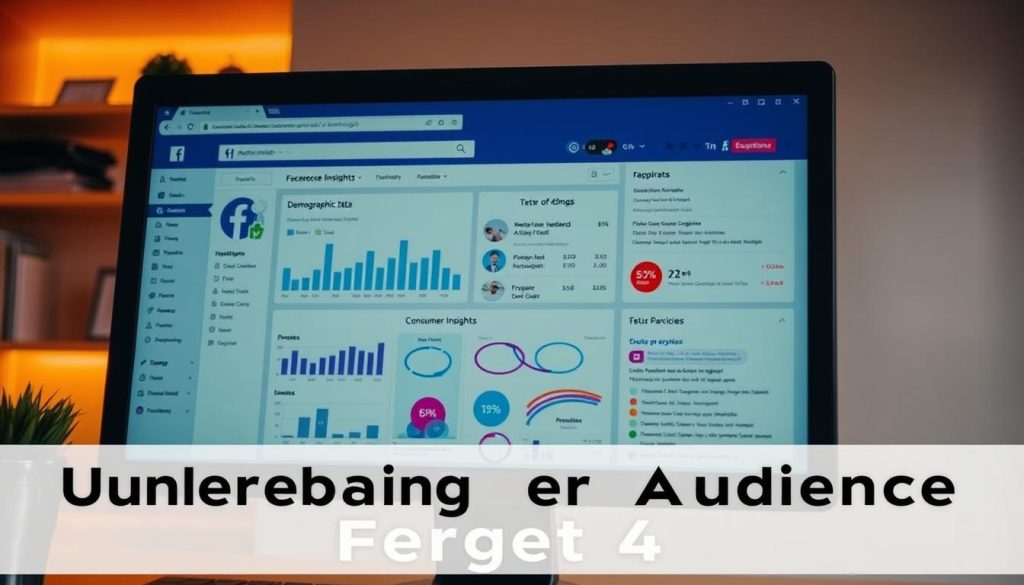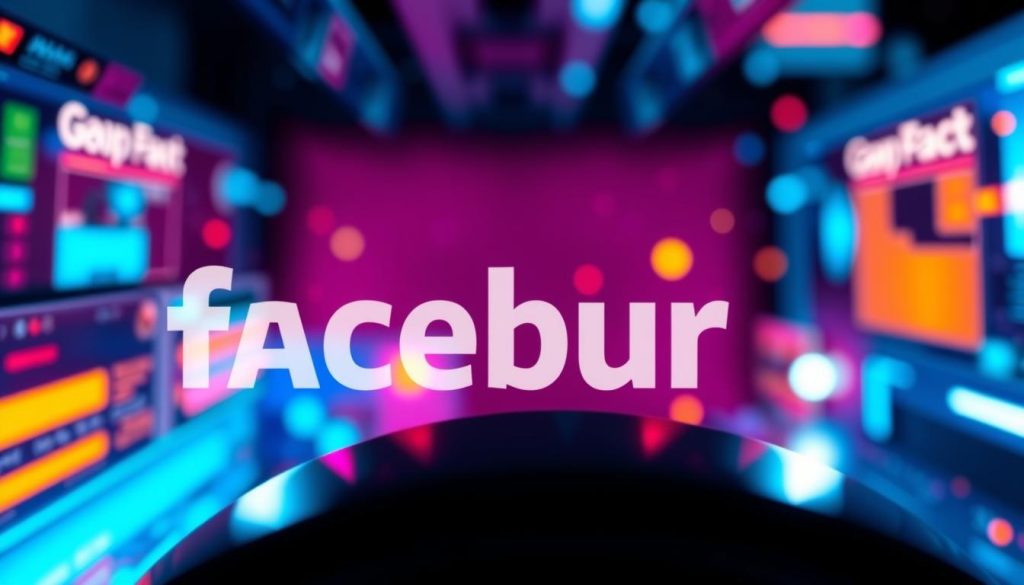Businesses often struggle to create effective Facebook Ads campaigns, wasting ad spend on strategies that don’t stick. We’ve seen it time and again – throwing spaghetti at the wall to see what works is not a viable marketing strategy.
That’s why we’re here to guide you through the process. By leveraging Facebook’s vast user base and advanced targeting capabilities, businesses can drive significant growth and achieve their marketing objectives. Our goal is to provide a clear, step-by-step guide to mastering Facebook Ads.
Key Takeaways
- Understand the importance of Facebook Ads for business growth
- Learn how to create effective Facebook Ads campaigns
- Discover advanced targeting capabilities on Facebook
- Drive significant growth and achieve marketing objectives
- Master Facebook Ads with our step-by-step guide
Understanding Facebook Ads and Their Importance
In the realm of digital advertising, Facebook Ads stand out as a powerful means to reach target audiences. With a vast user base, Facebook provides businesses with an unparalleled opportunity to connect with their desired audience through Facebook Ads.
What Are Facebook Ads?
Facebook Ads are a form of social media advertising that allows businesses to create tailored messages to specific audiences. These ads can be in various formats, including images, videos, and carousels, offering flexibility in how businesses present their offerings.

Key Benefits of Using Facebook Ads
One of the primary benefits of using Facebook Ads is their precise audience targeting capabilities. This allows businesses to deliver their messages to the most relevant users, increasing the likelihood of conversion. Additionally, Facebook Ads provide measurable results, enabling businesses to track the effectiveness of their campaigns and make data-driven decisions.
We find that the key benefits include:
- Precise audience targeting
- Measurable results
- Flexibility in ad formats
Facebook Ads vs. Other Advertising Platforms
When comparing Facebook Ads to other advertising platforms, several factors come into play. Facebook’s vast user base and advanced targeting options make it an attractive choice for businesses. However, it’s essential to consider other platforms as well, such as Google Ads and LinkedIn Ads, to determine the best fit for your specific business needs.
We recommend evaluating the strengths of each platform:
| Platform | Targeting Options | Ad Formats |
|---|---|---|
| Facebook Ads | Advanced demographic and interest-based targeting | Images, videos, carousels, and more |
| Google Ads | Keyword-based targeting | Text, display, and video ads |
| LinkedIn Ads | Professional demographic targeting | Sponsored content, sponsored InMail, and display ads |
Setting Up Your Facebook Ads Account
Creating a robust Facebook Ads account is the foundation upon which successful ad campaigns are built. To get started, you need to set up your account correctly, ensuring that you have the necessary tools and configurations in place.
Creating Your Business Manager Account
The first step in setting up your Facebook Ads account is to create a Business Manager Account. This account will serve as the central hub for managing your Facebook Ads, Pages, and other assets. To create a Business Manager Account, follow these steps:
- Add your business details, including your business name and email address.
- Verify your email address to activate your account.
- Add your Facebook Page and other relevant assets to your Business Manager Account.
By having a Business Manager Account, you can manage your Facebook Ads more efficiently, track performance, and collaborate with team members.
Linking Your Facebook Page
Linking your Facebook Page to your Business Manager Account is crucial for running ads. Here’s how to do it:
- Go to your Business Manager Account and navigate to the “Pages” section.
- Click on “Add Page” and enter your Facebook Page’s URL or name.
- Follow the prompts to claim your Page and connect it to your Business Manager Account.
Once your Page is linked, you can use it to create and manage ads directly from your Business Manager Account.

Setting Up Payment Methods
To run ads on Facebook, you need to set up a payment method. We recommend using a credit or debit card for seamless transactions. Here’s how to add a payment method:
- Navigate to the “Billing” section in your Business Manager Account.
- Click on “Add Payment Method” and enter your payment details.
- Verify your payment method to ensure it’s ready for use.
Having a valid payment method on file ensures that your ads run without interruption, helping you achieve your advertising goals.
By following these steps, you’ll have a fully set up Facebook Ads account, ready to launch your ad campaigns. Remember, a well-configured account is key to managing your campaigns effectively and achieving the desired outcomes.
Defining Your Advertising Goals
Clear advertising goals are essential for creating effective ad campaigns that drive meaningful results on Facebook. Whether you’re looking to boost your brand’s visibility, generate leads, or drive sales, well-defined objectives help you stay focused and measure success.
To get the most out of your Facebook Ads, you need to tailor your campaigns to your specific business objectives. As noted, “whether your goal is brand awareness, website traffic, or increased sales, Facebook Ads can be customized to align with your unique business objectives.” This flexibility is what makes Facebook Ads a powerful tool for businesses of all sizes.
Increasing Brand Awareness
One of the primary goals for many businesses on Facebook is to increase brand awareness. This involves reaching new audiences and making them familiar with your brand. To achieve this, you can:
- Use targeted ads to reach demographics that are likely to be interested in your brand.
- Leverage Facebook’s vast user data to ensure your ads are seen by the right people.
- Create engaging ad content that resonates with your target audience.

Generating Leads and Sales
For businesses looking to generate leads or drive sales, Facebook Ads offers a range of solutions. You can:
- Design ads with clear calls-to-action that encourage users to sign up or make a purchase.
- Utilize Facebook’s lead generation tools, such as lead forms, to capture user information directly within the platform.
- Target users who have shown interest in your products or services, or those who have interacted with your brand before.
By focusing on these strategies, you can effectively use Facebook Ads for lead generation and sales.
Driving Traffic to Your Website
Driving traffic to your website is another key objective for many businesses. Facebook Ads can be optimized to direct users to your site, where they can learn more about your products or services. To do this effectively:
- Ensure your ad copy and visuals are compelling and relevant to your target audience.
- Use clear and direct calls-to-action that prompt users to visit your site.
- Optimize your website for conversions, so once users arrive, they’re encouraged to take the desired action.
By defining your advertising goals clearly and using Facebook Ads effectively, you can achieve significant results for your business, whether that’s increasing brand awareness, generating leads and sales, or driving traffic to your website.
Understanding Your Target Audience
To create effective Facebook ads, understanding your target audience is crucial. Knowing who your ideal customer is, what they are interested in, and how they behave online helps you tailor your ads to resonate with them.
Demographics and Psychographics
Understanding your target audience involves analyzing both demographics and psychographics. Demographics include age, gender, location, and income level, while psychographics delve into interests, behaviors, and lifestyle.
For instance, if you’re selling outdoor gear, your target audience might be individuals aged 25-45 who enjoy hiking and camping. By understanding their demographics and psychographics, you can create ads that speak directly to their interests.
| Demographic Characteristics | Example | Targeting Options |
|---|---|---|
| Age | 25-45 | Facebook’s age targeting |
| Interests | Hiking, camping | Facebook’s interest-based targeting |
| Location | Urban, rural | Facebook’s location targeting |
Using Facebook Audience Insights
Facebook Audience Insights is a powerful tool that provides valuable information about your target audience. It helps you understand their demographics, interests, and behaviors.
By using Audience Insights, you can discover new audience segments and create more effective targeting strategies. For example, you can identify the pages your audience likes, their purchasing behavior, and their online activities.

Custom Audiences vs. Lookalike Audiences
Facebook offers two powerful audience targeting options: Custom Audiences and Lookalike Audiences. Custom Audiences allow you to target users who have already interacted with your business, such as email subscribers or website visitors.
Lookalike Audiences, on the other hand, enable you to target new users who are similar to your existing customers or followers. By targeting Lookalike Audiences, you can expand your reach to potential customers who are likely to be interested in your products or services.
Key differences between Custom Audiences and Lookalike Audiences:
- Custom Audiences target existing customers or followers.
- Lookalike Audiences target new users similar to your existing audience.
By combining these targeting strategies, you can create a robust Facebook ad campaign that resonates with both existing and potential customers.
Crafting Compelling Ad Copy
Crafting compelling ad copy is crucial for the success of your Facebook ad campaigns, as it directly impacts how your audience engages with your brand. Effective ad copy can significantly boost your campaign’s performance, driving better results and higher returns on investment.
To create ad copy that resonates with your audience, you need to focus on several key elements. Clear messaging is at the forefront, ensuring that your audience quickly understands the value proposition you’re offering.
Importance of Clear Messaging
Clear messaging in ad copy helps to immediately capture the attention of your target audience. It’s about being concise and direct, avoiding jargon or overly complex language that might confuse or alienate potential customers.
When crafting your ad copy, consider the following tips for clear messaging:
- Use simple, straightforward language that resonates with your audience.
- Focus on the benefits of your product or service rather than just listing features.
- Ensure your message is consistent across all your ad campaigns.
Using Strong Call-to-Actions
A strong call-to-action (CTA) is vital for guiding your audience toward the desired action, whether it’s making a purchase, signing up for a newsletter, or visiting your website. Your CTA should be prominent and persuasive, encouraging users to engage further with your brand.
To create an effective CTA, consider these best practices:
- Use action-oriented language that creates a sense of urgency.
- Make sure your CTA stands out visually within your ad.
- Test different CTAs to see which ones perform best with your audience.
Techniques for Engaging Headlines
Your headline is often the first thing a potential customer sees, making it a critical component of your ad copy. Engaging headlines can pique interest, encourage further reading, and ultimately drive better ad performance.
Here are some techniques for crafting engaging headlines:
- Ask a question that resonates with your audience’s needs or concerns.
- Create a sense of urgency or scarcity to prompt action.
- Use numbers or statistics to add credibility and interest.

By focusing on clear messaging, strong CTAs, and engaging headlines, you can significantly improve the effectiveness of your Facebook ad campaigns. Remember, the goal is to create ad copy that not only captures attention but also drives meaningful engagement and conversions.
Designing Eye-Catching Visuals
Eye-catching visuals are crucial for a successful Facebook ad campaign, as they directly impact user engagement and conversion rates. In a crowded Facebook feed, your ad’s visual elements can make or break its performance.
To create effective visuals, you need to understand the best practices for ad images, the tips for successful video ads, and the various ad format options available on Facebook.
Best Practices for Ad Images
When it comes to ad images, high-quality visuals are non-negotiable. Here are some best practices to follow:
- Use high-resolution images that are clear and sharp.
- Ensure the image is relevant to your message and resonates with your target audience.
- Avoid overly text-heavy images, as Facebook recommends using less than 20% text in your ad images.
- Use contrasting colors to make your ad stand out.
For more detailed guidance on creating effective ad graphics, check out our comprehensive guide on Facebook ad graphics.
Video Ads: Tips for Success
Video ads are a powerful way to engage your audience on Facebook. Here are some tips for success:
- Keep your videos short and concise, ideally between 15 seconds to 1 minute.
- Use captions or text overlays to convey your message, as many users watch videos without sound.
- Ensure your video is visually appealing and includes a clear call-to-action.
- Optimize your video for mobile devices, as most Facebook users access the platform through their smartphones.
Ad Format Options on Facebook
Facebook offers a variety of ad formats to suit different social media advertising guide needs. Some of the most effective formats include:
| Ad Format | Description | Use Case |
|---|---|---|
| Image Ads | Single image with text overlay | Promoting a product or service |
| Carousel Ads | Multiple images or videos in a single ad | Showcasing multiple products or features |
| Video Ads | Video content to engage users | Telling a brand story or demonstrating a product |
| Collection Ads | Combination of images and videos with a direct link to a product catalog | E-commerce businesses looking to drive sales |
By understanding and leveraging these ad formats, you can create a more effective Facebook ad campaign that resonates with your target audience.

Setting Your Budget and Bidding Strategy
To maximize ROI on Facebook Ads, understanding budget and bidding strategies is crucial. Effective budget allocation and bidding techniques are essential for achieving your advertising goals on Facebook.
Daily vs. Lifetime Budgets
When setting up your Facebook Ads campaign, you need to decide between a daily budget and a lifetime budget. A daily budget is the average amount you’re willing to spend per day, while a lifetime budget is the total amount you’re willing to spend over the campaign’s duration.
Choosing between these two budget types depends on your campaign goals and duration. For short-term campaigns, a lifetime budget can help you control total spend, while a daily budget is more suitable for ongoing campaigns.
Understanding CPC and CPM
Facebook Ads operate on two primary pricing models: Cost Per Click (CPC) and Cost Per Mille (CPM). CPC charges advertisers for each ad click, while CPM charges for every 1,000 ad impressions.
Understanding these models is crucial for optimizing your ad performance. CPC is ideal for campaigns focused on driving traffic or generating leads, while CPM is better suited for campaigns aimed at increasing brand awareness.
Tips for an Effective Bidding Strategy
An effective bidding strategy is critical for achieving your desired ad performance. Here are some tips to optimize your bidding:
- Set clear campaign objectives to guide your bidding strategy.
- Choose the right bidding option: automatic or manual bidding.
- Monitor your ad performance regularly to adjust your bids.
- Use Facebook’s bid optimization tools to maximize ROI.
To illustrate the impact of different bidding strategies, consider the following table:
| Bidding Strategy | CPC | CPM | Conversion Rate |
|---|---|---|---|
| Automatic Bidding | $0.50 | $5.00 | 2% |
| Manual Bidding (Low) | $0.30 | $3.00 | 1.5% |
| Manual Bidding (High) | $0.80 | $8.00 | 3% |
By understanding and implementing these budget and bidding strategies, you can significantly improve your Facebook Ads performance and achieve your marketing goals.
Creating Your First Facebook Ad Campaign
We guide you through the process of creating your first effective Facebook ad campaign. This involves several strategic steps that ensure your campaign is well-planned and executed.
Step-by-Step Campaign Creation Process
To create a successful Facebook ad campaign, follow these steps:
- Define your campaign objective, whether it’s to increase brand awareness, generate leads, or drive sales.
- Choose your target audience based on demographics, interests, and behaviors.
- Set a budget that aligns with your advertising goals.
- Design compelling ad creatives that resonate with your audience.
- Monitor and optimize your campaign for better performance.
Choosing the Right Ad Format
Facebook offers various ad formats to suit different marketing objectives. These include:
- Image Ads: Effective for visually showcasing products or services.
- Video Ads: Engaging and versatile, ideal for storytelling.
- Carousel Ads: Allow multiple images or videos in a single ad.
- Collection Ads: Combine video or image with product catalogs.
Choose an ad format that best aligns with your campaign goals and audience preferences.
Setting Up Placement Options
Facebook provides various placement options to reach your audience across different platforms:
- Facebook Feed: Ideal for most ad formats.
- Instagram Feed: Effective for visually driven campaigns.
- Audience Network: Extends your reach beyond Facebook and Instagram.
Selecting the right placement options ensures your ads are seen by your target audience where they are most active.
A/B Testing Your Ads
Facebook Ads success hinges on continuous A/B testing and optimization. To achieve the best results, it’s crucial to understand the importance of A/B testing and how to implement it effectively.
Importance of Split Testing
Split testing, or A/B testing, allows us to compare two or more versions of an ad to determine which one performs better. This process is vital for optimizing ad performance and ensuring that our advertising efforts yield the desired outcomes.
By identifying which elements of an ad resonate with the target audience, we can refine our advertising strategy and improve overall campaign effectiveness.
What to Test in Your Ads
When it comes to A/B testing on Facebook, there are several key elements to consider testing:
- Ad creative (images, videos, headlines)
- Targeting options (demographics, interests, behaviors)
- Ad copy and messaging
- Call-to-actions (CTAs)
- Bidding strategies
By testing these elements, we can gain valuable insights into what works best for our audience and adjust our campaigns accordingly.
Analyzing A/B Test Results
Once we’ve run our A/B tests, it’s essential to analyze the results to inform future advertising decisions. Key metrics to examine include:
| Metric | Description | Importance |
|---|---|---|
| Click-Through Rate (CTR) | Percentage of users who click on the ad after seeing it | High CTR indicates ad relevance |
| Conversion Rate | Percentage of users who complete a desired action | Directly impacts ROI |
| Cost Per Click (CPC) | Average cost per ad click | Affects budget allocation |
For more detailed information on optimizing ad performance and implementing effective Facebook ads best practices, we recommend visiting Christoph Olivier Consulting’s paid advertising page. By leveraging A/B testing and analyzing the results, we can continually refine our Facebook Ads strategy to achieve better outcomes and maximize our return on investment.
Monitoring Ad Performance Metrics
Monitoring ad performance metrics is essential for optimizing your Facebook Ads campaigns. By closely tracking key performance indicators, we can identify areas for improvement and make data-driven decisions to enhance our advertising strategy.
Key Metrics to Track
To effectively monitor ad performance, we need to focus on several crucial metrics. These include:
- Reach: The number of unique users who have viewed your ad.
- Impressions: The total number of times your ad has been displayed.
- CTR (Click-Through Rate): The percentage of users who clicked on your ad after viewing it.
- CPC (Cost Per Click): The average cost incurred for each click on your ad.
- Conversions: The number of users who completed a desired action (e.g., made a purchase, signed up for a newsletter).
| Metric | Description | Importance |
|---|---|---|
| Reach | Unique users who viewed your ad | Indicates ad visibility |
| Impressions | Total ad displays | Helps understand ad exposure |
| CTR | Percentage of users who clicked | Measures ad engagement |
| CPC | Average cost per ad click | Affects budget allocation |
| Conversions | Users who completed a desired action | Directly impacts ROI |
Understanding Facebook Ads Reporting
Facebook provides comprehensive reporting tools to help us understand our ad performance. These tools offer insights into various metrics, allowing us to analyze our campaigns’ effectiveness and identify opportunities for improvement.
By leveraging Facebook’s reporting features, we can:
- Track campaign performance over time
- Compare the performance of different ad sets and ads
- Understand user behavior and engagement patterns
Tools for Monitoring Ad Performance
In addition to Facebook’s built-in reporting tools, there are several third-party tools available that can enhance our ability to monitor ad performance. These tools can provide additional insights and help us optimize our campaigns more effectively.
Optimizing Your Ads for Better Results
The key to a successful Facebook ad campaign lies in continuous optimization. To achieve the best possible results, we need to regularly assess and refine our ad strategies.
Making Adjustments Based on Data
Data-driven decision-making is crucial for optimizing Facebook ads. We analyze performance metrics such as click-through rates, conversion rates, and cost per click to identify areas for improvement. By adjusting our ad targeting, budget allocation, and creative assets based on these insights, we can significantly enhance our campaign’s effectiveness.
For instance, if we notice that a particular ad set is underperforming, we can pause it and reallocate its budget to better-performing ads. Similarly, if certain audience segments are responding more favorably to our ads, we can expand our targeting to include similar users.
Scaling Successful Ad Campaigns
Once we’ve identified successful ad campaigns, the next step is to scale them effectively. Scaling involves increasing our budget, expanding our target audience, or duplicating successful ad sets across different regions or demographics. However, it’s essential to do this carefully to maintain our campaign’s efficiency and ROI.
We can scale our campaigns by gradually increasing our budget while monitoring performance metrics to ensure that our ads remain profitable. Additionally, we can use Facebook’s lookalike audiences feature to target new users who resemble our existing customers or high-performing audience segments.
Common Mistakes to Avoid
While optimizing our Facebook ads, we must avoid common pitfalls that can undermine our efforts. One common mistake is failing to monitor ad performance regularly, leading to wasted budget on underperforming ads. Another mistake is not testing different ad creatives and targeting options, which can result in missed opportunities for improvement.
To avoid these mistakes, we should regularly review our ad performance, test new strategies, and stay up-to-date with the latest Facebook advertising best practices. By doing so, we can ensure that our ad campaigns remain optimized and effective over time.
Staying Updated on Facebook Ads Trends
To maximize the effectiveness of your Facebook Ads campaigns, it’s crucial to stay informed about the latest trends and best practices in Facebook marketing. The ever-evolving landscape of social media advertising demands continuous learning and adaptation.
Industry Insights and Updates
Following industry news and updates is vital for staying ahead of the curve. We recommend regularly checking Facebook’s official resources and industry publications for the latest Facebook marketing tips and social media advertising guide.
Community Engagement
Joining Facebook Ads communities can provide valuable insights and support. Engaging with other professionals and marketers allows you to share experiences, learn from others, and stay updated on the latest strategies.
Ongoing Education
Continuous learning is key to optimizing your Facebook Ads campaigns. By staying updated on the latest trends and best practices, you can refine your strategies and achieve better results, making the most of your social media advertising efforts.
